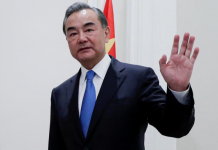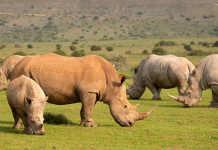In recent days, signs of a possible breakthrough in the year-long stand-off between Russia and Saudi Arabia on crude production strategy have emerged. Saudi Arabia, OPEC’s dominant member, has long insisted OPEC (read Saudi Arabia) would not reduce output to balance supply and demand absent corresponding cuts from non-OPEC members (read Russia), while Russia has consistently insisted harsh climactic conditions prevent Russian producers from reducing output and in any case Russia insists it could withstand low prices as well as any other country.
January 27, however, Russia announced, in a roundabout way, its willingness to cut. According to Bloomberg, the Russian Energy Ministry issued a statement that “Energy Minister Alexander Novak and the heads of Russia’s biggest oil companies discussed the possibility of working with OPEC.” The article also reported that Deputy Prime Minister Yury Trutnev told President Vladimir Putin that,
“There was a series of meetings with other governments last week on the issue of oil prices during the World Economic Forum in Davos, Switzerland. Oil exporters are talking about coordination because the current price is “unacceptable” to justify spending on exploration and field development”.
These Russian comments were not the only signs of potential movement in the past week. At a conference in Kuwait City, Iraq’s Oil Minister Adel Abdul Mahdi stated that “Saudi Arabia and Russia, the world’s biggest oil producers, are now more flexible about cooperating to cut output as crude prices have fallen to levels that hydrocarbon-rich nations didn’t foresee.
Many observers, however, have been quick to dismiss the significance of these public statements. John Kilduff, founding partner of Again Capital, and frequent CNBC oil contributor, commented January 29 on CNBC that:
“This whole story line about there being a coordinated production cut plan is just rubbish”).
More generally, as this quote from a recent Bloomberg article shows, observers believe simply both sides are committed to their current (over)production strategy:
“There’s little sign the countries themselves are ready to reach an agreement despite the economic damage wrought by the lowest prices since 2003. Long-standing obstacles remain — Saudi Arabia’s desire to defend market share, Russia’s inability to cut production in winter months — and analysts say talk of a deal probably reflects the hope of producers in pain rather than the expectation of concrete action”.
In fact, skeptical observers dismiss these statements’ implications at their own peril. Both the Saudis and the Russians are serious, as both have powerful motivations to agree on measures to balance the market through production cuts, reduce crude inventories, and increase prices.
The real question, instead, is whether their interests are sufficiently congruent to agree to simultaneous moves to balance the market.
With Their Economic Situation Dire, Are the Russians Desperate?
Over the last several months, as crude prices have renewed their plunge and taken the Ruble with them, Russian economic prospects have deteriorated sharply. Even a cursory review of press reports reveals the intensity of the economic pain.
At the World Economic Forum in Davos last week, Alexei Kudrin, Russia’s respected former Finance Minister, stated—or perhaps warned—”We have two years in reserve [to overcome the economic crisis] when social sentiments will be stable. There are still social protests, they are growing, but they aren’t bursting into something out of control”.
Until recent weeks, the Russian government had some basis to harbor hope that GDP, after contracting ~3.5 percent in 2015, would return to growth within this two year window. As late as Q3 2015, the IMF estimated that in 2016, GDP would grow, if only anemically at below 1 percent.
Recent crude price action, however, has dashed such hopes and instead has raised the prospect of a deeper and longer recession. In a “stress” test it conducted in November, the Russian Central Bank estimated that with Ural crude prices below $40 per barrel between 2016-2018, the Russian economy would contract five percent in 2016, inflation would run at 7-to-9 percent, and that these conditions “would also raise risks to inflation and financial stability.
Central Bank efforts to stabilize the Ruble and contain inflation are one reason the “stress” test results may prove prescient. The plunge in crude prices is preventing the Central Bank from easing monetary policy to stimulate the economy. Friday, January 29, it announced that it would keep its benchmark interest rate at 11 percent, to support the Ruble (which fell as low as ~R82.5/US$ last week before recovering to ~RUB75.5/US$ on January 29) and contain inflation. In its announcement, it noted that its next move could be to raise rather than lower the benchmark rate, were inflationary pressures to increase.






